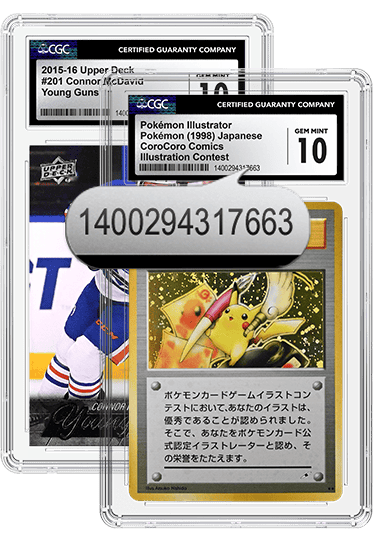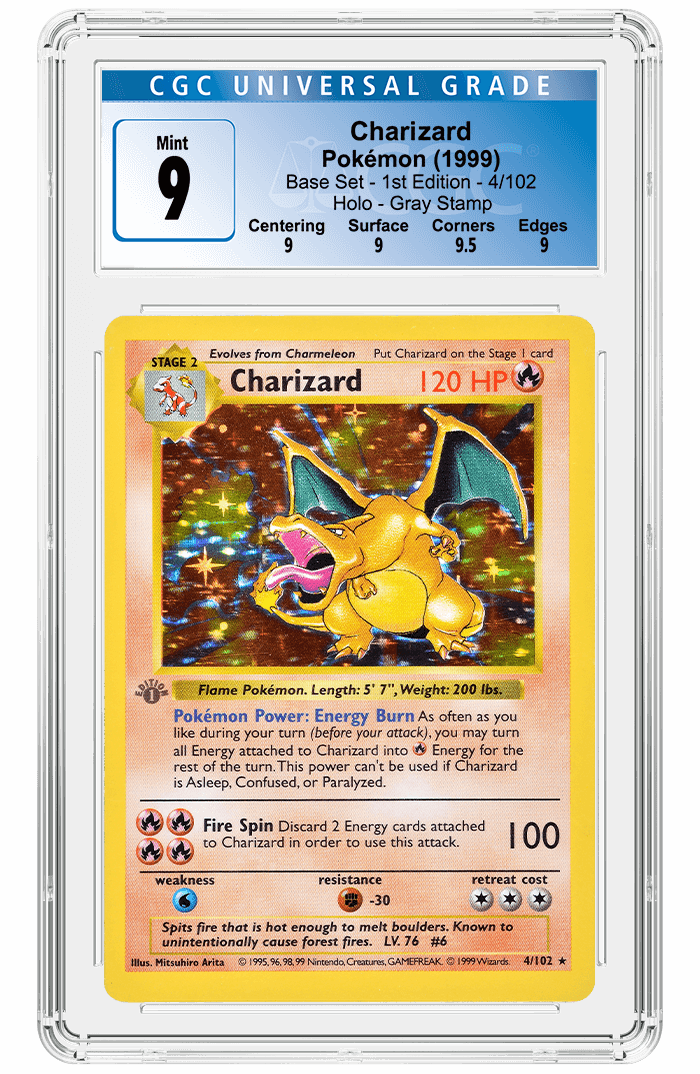How to Tell if a Pokémon Card is a First Edition
Posted on 6/3/2022
Trading card collectors know that understanding the hobby requires understanding a lot of lingo. That is certainly true when it comes to collecting Pokémon cards. Any discussion of Pokémon cards could include mentions of such terms as holos, reverse holos, shadowless cards, gray stamps, secret rares and rainbow rares.
“First Edition” is another term used in the world of Pokémon card collecting, especially when referring to the most valuable cards. It is not unheard of for first edition Pokémon cards, especially those from the earliest sets, to sell for hundreds of thousands of dollars. Yet first edition cards often look very similar to their less valuable counterparts. Knowing the difference can help you to know if a Pokémon card is worth $10 or $10,000 and how important Pokémon card grading is for your card.
Identifying first editions of Pokémon Base Set cards
When the Pokémon trading card game was introduced in the US in 1999, the first print run of the first set, which is known as the Base Set, included a “First Edition” symbol on every card. On cards featuring Pokémon, the symbol is found on the left side of the card midway between the card’s top and bottom. On Energy cards, it is in the top right corner. On Trainer cards, it is in the bottom left corner. The symbol is the number “1” on a solid black circle with the word “EDITION” in all capital letters arching around the top of the circle.
Pokémon cards quickly became popular, prompting a second print run of the Base Set. While the second print run included all of the same cards, the First Edition symbol was removed. Cards issued as a part of that print run are commonly known as “shadowless” cards because they do not include a drop shadow that was added to cards for future print runs.
When the second print run sold out, a third print run appeared. Known today as “unlimited” cards, those issued as part of the third print run had design updates intended to make the cards easier to read. The most notable update was the addition of a drop shadow to the right side of the art box on the cards. A later print run of Base Set cards, which included the same updates done to the unlimited cards, was released in 2000 in the UK. This final print run changed the copyright date to “1999-2000” to ensure copyright protections. These cards also frequently appear lighter than the earlier print runs.
First editions beyond Base Set
Pokémon continued to use the first edition symbol to identify first print runs for approximately the next three years. During that time, 10 Pokémon sets were issued, ending with the Neo Destiny set. The only set during that three-year period that did not include cards carrying the first edition symbol was Base Set 2, which was composed of reprints from the Base Set and Jungle sets.
In the 20 years that followed the Neo Destiny set, Pokémon has not issued English-language cards with first edition stamps. However, in 2001 when the Pokémon VS set was released, first edition symbols were added to the first print runs of Japanese-language cards. The practice of printing first edition Japanese-language Pokémon cards continued until the release of the 20th Anniversary set in 2016. As opposed to the English issues, the first edition releases of Japanese sets are often far more common than their unlimited counterparts.
The first edition symbol used on Japanese cards is different from the English-language version. It is composed of a large number “1” sitting on top of the word “EDITION,” which is printed in all capital letters between two horizontal lines. The symbol appears in the lower-right corner of Pokémon and Trainer cards. The first edition symbol did not appear on Japanese Energy cards.
 |
The allure of first edition cards
For Pokémon card collectors, first edition cards featuring iconic Pokémon rank among the most sought-after in the franchise’s 25+ year history. Those who bought the earliest Pokémon cards were often children who loved to carry the cards in their pockets and trade them with their friends. As a result, the cards that have survived are often in poor condition. When a card from that era surfaces in pristine condition, it demands premium prices.
The Base Set Charizard, which is considered by many to be the Holy Grail of Pokémon cards, illustrates the challenge of finding a first edition card with a high grade. As of May 31, 2022, CGC Trading Cards had graded almost 23,000 Base Set, First Edition, Pokémon cards. Of those, 252 were Charizards. Less than 20 graded CGC 9 or CGC 9.5. None have graded CGC 10 so far.
How much easier is it to obtain a Charizard that is a Base Set, Unlimited? CGC Trading Cards had graded nearly 68,000 Pokémon cards from Base Set - Unlimited, as of May 31, 2022. Of those, nearly 6,000 were Charizards. More than 300 of those graded CGC 9 or CGC 9.5. As with the First Edition version, none have graded CGC 10 so far.
Stay Informed
Want news like this delivered to your inbox once a month? Subscribe to the free CGC eNewsletter today!
 TB20220606111816771.png)
 TB20220606111916082.png)




